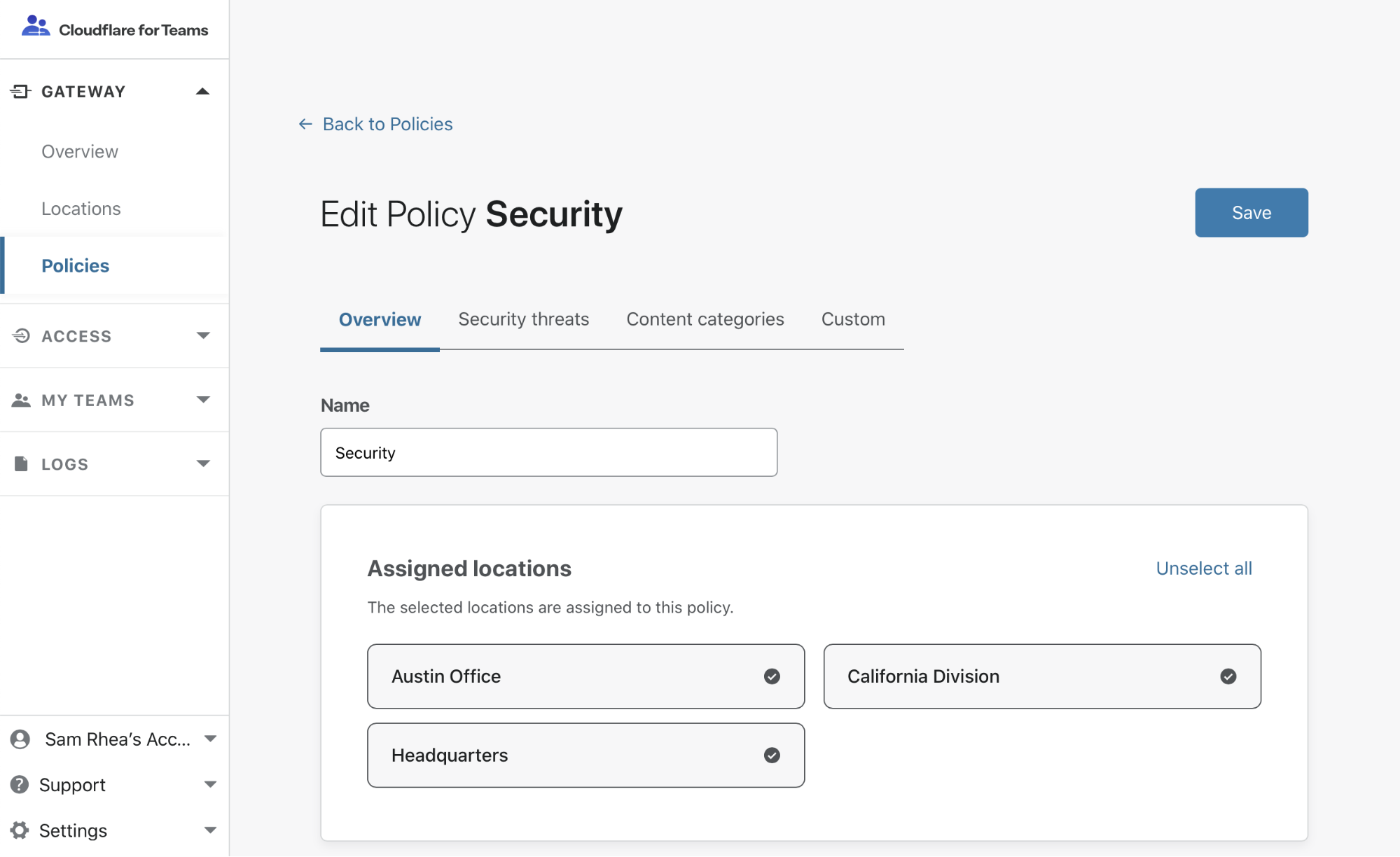IPv6 Buzz 062: Reviewing DNS Flag Day 2020
DNS Flag Day is a community effort by service providers and DNS software vendors to address DNS issues. In this week's IPv6 Buzz episode, Ed and Scott speak with guest Andrew Wertkin about the DNS flag day for 2020, which took place October 1st. They discuss what this year's DNS Flag Day addressed, plus DNS behavior that listeners should look for that might indicate they aren’t current with their DNS settings and configurations.
The post IPv6 Buzz 062: Reviewing DNS Flag Day 2020 appeared first on Packet Pushers.
Hedge Podcast #56: Lysa Myers on Burnout and Good People
PTSD is a real thing in the information technology world; it impacts the ability to keep and manage good people. In this episode of the Hedge, Lya Myers joins Eyvonne Sharp, Tom Ammon, and Russ White to discuss PTSD, burnout, and strategies for dealing with them.
How small businesses can start using Cloudflare One today

Earlier this week, we announced Cloudflare One™, our comprehensive, cloud-based network-as-a-service solution. Cloudflare One improves network performance and security while reducing cost and complexity for companies of all sizes.
Cloudflare One is built to handle the scale and complexity of the largest corporate networks. But when it comes to network security and performance, the industry has focused all too often on the largest of customers with significant budgets and technology teams. At Cloudflare, we think it’s our opportunity and responsibility to serve everyone, and help companies of all sizes benefit from a better Internet.
This is Zero Trust Week at Cloudflare, and we’ve already talked about our mantra of Zero Trust for Everyone. As a quick refresher, Zero Trust is a security framework that assumes all networks, devices, and Internet destinations are inherently compromised and therefore should not be trusted. Cloudflare One facilitates Zero Trust security by securing how your users connect to corporate applications and the Internet at large.
As a small business network administrator, there are fundamentally three things you need to protect: devices, applications, and the network itself. Below, I’ll outline how you can secure devices whether they are in your office (DNS Filtering) or remote (WARP+ Continue reading
Getting started with Ansible security automation: Threat Hunting
AnsibleFest has just wrapped up, with a whole track dedicated to security automation, our answer to the lack of integration across the IT security industry. If you’re looking for a use case to start with, our investigation enrichment blog will give you yet another example of where Ansible can facilitate typical operational challenges of security practitioners.
Ansible security automation is about integrating various security technologies with each other. One part of this challenge is the technical complexity: different products, interfaces, workflows, etc. But another equally important part is getting the processes of different teams in the security organization aligned. After all, one sign of successful automation is the deployment across team boundaries.
This is especially true with threat hunting activities: when security analysts suspect a malicious activity or want to prove a hypothesis, they need to work with rules and policies to fine tune the detection and identification. This involves changes and configurations on various target systems managed by different teams.
In this blog post, we will start with a typical day-to-day security operations challenge and walk through some example threat hunting steps - adding more teams and products over the course to finally show how Red Hat Ansible Automation Continue reading
With Another Key Supercomputer Win, Atos Looks Stronger Than Ever
For those who have followed supercomputing over several years, the Bull systems brand is familiar, especially in Europe. …
With Another Key Supercomputer Win, Atos Looks Stronger Than Ever was written by Nicole Hemsoth at The Next Platform.
Introducing Cloudflare Browser Isolation beta

Reimagining the Browser

A web browser, the same application that connects users to the entire Internet, also connects you to all of the potentially harmful parts of the Internet. It’s an open door to nearly every connected system on the planet, which is powerful and terrifying.
We also rely on browsers more than ever. Most applications that we use live in a browser and that will continue to increase. For more and more organizations, a corporate laptop is just a managed web browser machine.
To keep those devices safe, and the data they hold or access, enterprises have started to deploy “browser isolation” services where the browser itself doesn’t run on the machine. Instead, the browser runs on a virtual machine in a cloud provider somewhere. By running away from the device, threats from the browser stay on that virtual machine somewhere in the cloud.
However, most isolation solutions take one of two approaches that both ruin the convenience and flexibility of a web browser:
- Record the isolated browser and send a live stream of it to the user, which is slow and makes it difficult to do basic things like input text to a form.
- Unpack the webpage, inspect Continue reading
A Simple Map of 5G Functions. And Why You Don’t Care About 5G.
 A common mistake about 5G is that is a single monolithic thing. In fact a 5G network is a diverse cluster of systems that interoperate to deliver 5G service. I want to share a simplified model of 5G network and use cases. I simplify 5G Use Cases to three categories: Human, Non-Human and False. Human/Smartphones […]
A common mistake about 5G is that is a single monolithic thing. In fact a 5G network is a diverse cluster of systems that interoperate to deliver 5G service. I want to share a simplified model of 5G network and use cases. I simplify 5G Use Cases to three categories: Human, Non-Human and False. Human/Smartphones […]
Automation Win: Recreating Cisco ACI Tenants in Public Cloud
This blog post was initially sent to the subscribers of our SDN and Network Automation mailing list. Subscribe here.
Most automation projects are gradual improvements of existing manual processes, but every now and then the stars align and you get a perfect storm, like what Adrian Giacommetti encountered during one of his automation projects.
The customer had well-defined security policies implemented in Cisco ACI environment with tenants, endpoint groups, and contracts. They wanted to recreate those tenants in a public cloud, but it took way too long as the only migration tool they had was an engineer chasing GUI screens on both platforms.
Automation Win: Recreating Cisco ACI Tenants in Public Cloud
This blog post was initially sent to the subscribers of our SDN and Network Automation mailing list. Subscribe here.
Most automation projects are gradual improvements of existing manual processes, but every now and then the stars align and you get a perfect storm, like what Adrian Giacommetti encountered during one of his automation projects.
The customer had well-defined security policies implemented in Cisco ACI environment with tenants, endpoint groups, and contracts. They wanted to recreate those tenants in a public cloud, but it took way too long as the only migration tool they had was an engineer chasing GUI screens on both platforms.
Networking and Infrastructure News Roundup: October 16 Edition
Cisco adds cloud-managed sensors for asset and facility monitoring, Masergy unveils secure SD-WAN solutions for the remote workforce, and more.Solving Microservices Connectivity Issues with Network Logs
The network is foundational to distributed application environments. A distributed application has multiple microservices, each running in a set of pods often located on different nodes. Problem areas in a distributed application can be in network layer connectivity (think network flow logs), or application resources unavailability (think metrics), or component unavailability (think tracing). Network layer connectivity can be impacted by various factors such as routing configuration, IP pool configuration, network policies, etc. When service A cannot talk to service B over the network, or an external application cannot connect to service A, network logs become an essential source of historical data needed for troubleshooting connectivity issues. Just like in a traditional network, network logs enable cluster administrators to monitor the Kubernetes microservices network.
Network Logs Can Address Multiple Use Cases
Network logs can be used to serve the unique requirements of different teams (DevOps, SecOps, Platform, Network). The value of Kubernetes network logs resides in the information collected, such as detailed context about endpoints (e.g., pods, labels, namespaces) and the network policies deployed in configuring the connection. Within the IT estate, DevOps, SecOps, Network and Platform teams can use network logs to address use cases that Continue reading
Getting the Most From Your Enterprise Software
An important survival strategy in austere times is to be sure your employees are getting the most value from the software your company already licenses.Yes, we can validate leaked emails
When emails leak, we can know whether they are authenticate or forged. It's the first question we should ask of today's leak of emails of Hunter Biden. It has a definitive answer.
Today's emails have "cryptographic signatures" inside the metadata. Such signatures have been common for the past decade as one way of controlling spam, to verify the sender is who they claim to be. These signatures verify not only the sender, but also that the contents have not been altered. In other words, it authenticates the document, who sent it, and when it was sent.
Crypto works. The only way to bypass these signatures is to hack into the servers. In other words, when we see a 6 year old message with a valid Gmail signature, we know either (a) it's valid or (b) they hacked into Gmail to steal the signing key. Since (b) is extremely unlikely, and if they could hack Google, they could a ton more important stuff with the information, we have to assume (a).
Your email client normally hides this metadata from you, because it's boring and humans rarely want to see it. But it's still there in the original email document. An email Continue reading
Best of Fest: AnsibleFest 2020
Thank you to everyone who joined us over the past two days for the AnsibleFest 2020 virtual experience. We had such a great time connecting with Ansible lovers across the globe. In case you missed some of it (or all of it), we have some event highlights to share with you! If you want to go see what you may have missed, all the AnsibleFest 2020 content will be available on demand for a year.
Community Updates
This year at AnsibleFest 2020, Ansible Community Architect Robyn Bergeron kicked off with her keynote on Tuesday morning. We heard how with Ansible Content Collections, it’s easier than ever to use Ansible the way you want or need to, as a contributor or an end user. Ansible 2.10 is now available, and Robyn explained how the feedback loop got us there. If you want to hear more about the Ansible community project, go watch Robyn’s keynote on demand.
Product Updates
Ansible’s own Richard Henshall talked about the Red Hat Ansible Automation Platform product updates and new releases. In 2018, we unveiled the Ansible certified partner program and now we have over 50 platforms certified. We are bridging traditional Continue reading
Intel To Amp Up Security With “Ice Lake” Xeon SP Servers
Security is one of those necessary things that should not be an afterthought, but often is, and ideally is so invisible that it doesn’t get in the way of applications and the infrastructure it runs on. …
Intel To Amp Up Security With “Ice Lake” Xeon SP Servers was written by Timothy Prickett Morgan at The Next Platform.